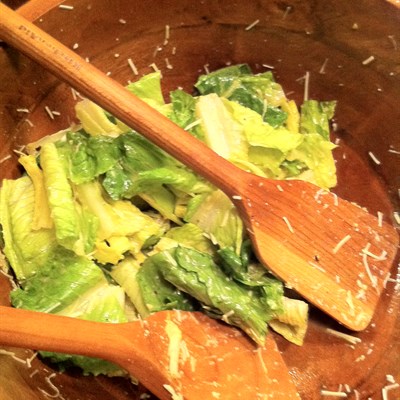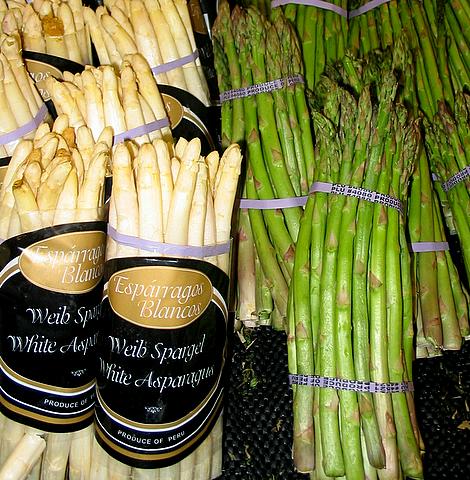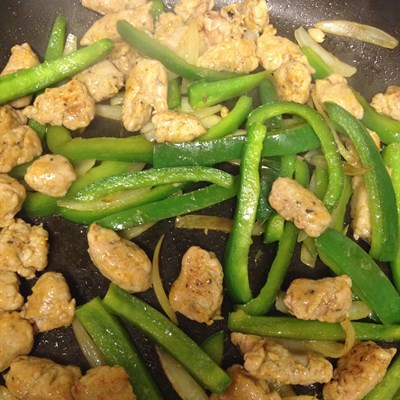 KRIS GUNNARS, AUTHORITY NUTRITION
KRIS GUNNARS, AUTHORITY NUTRITION
There is only a limited amount of food you can eat in a single day. In order to maximize the amount of nutrients you take in, it makes sense to spend your “calorie budget” wisely.
The best way to do that is to simply eat the foods that carry the greatest amount and variety of nutrients. These are the 11 most nutrient dense foods on the planet.
1. Salmon
Not all fish is created equal. Salmon, and other fatty types of fish, contain the greatest amount of Omega-3s.
Omega-3 fatty acids are extremely important for the optimal function of your body. They’re linked to improved wellbeing and a lower risk of many serious diseases (1). Although salmon is mainly prized for its beneficial composition of fatty acids, it also packs a massive amount of other nutrients.
A 100 gram piece of wild salmon contains 2.8 grams of Omega-3s, along with lots of high quality animal protein and a ton of vitamins and minerals… including large amounts of Magnesium, Potassium, Selenium and all the B-vitamins (2). It is a good idea to eat fatty fish at least once or twice a week, to get all the Omega-3s that your body (and brain) desperately need.
Studies show that the people who eat fatty fish regularly have a lower risk of heart disease, dementia, depression and a plethora of common diseases (3, 4, 5, 6). Also, let’s not forget the fact that salmon tastes awesome and is fairly simple to prepare. It also tends to make you feel full with relatively few calories.
If you can, choose wild salmon instead of farmed. It is more nutritious, has a betterOmega-6:Omega-3 ratio and is less likely to contain harmful compounds (7, 8).
Bottom Line: Fatty fish like salmon is loaded with beneficial fatty acids, protein, vitamins and minerals. It is a good idea to eat fatty fish every week.
2. Kale
Of all the super healthy leafy greens, kale is the king. It is loaded with vitamins, minerals, fiber, antioxidants and various bioactive compounds.
A 100 gram portion of kale contains (9):
- 200% of the RDA for Vitamin C.
- 300% of the RDA for Vitamin A (from beta-carotene).
- 1000% of the RDA for Vitamin K1.
- Large amounts of Vitamin B6, Potassium, Calcium, Magnesium, Copper and Manganese.
This is coming with 2 grams of fiber, 3 grams of protein and only 50 calories. Kale may be even healthier than spinach. Both are super nutritious, but kale is lower in oxalates, which are substances that can bind minerals like calcium in the intestine, preventing them from being absorbed (10).
Kale (and other greens) are also loaded with various bioactive compounds, including Isothiocyanates and Indole-3-Carbinol, which have been shown to fight cancer in test tubes and animal studies (11, 12).
Bottom Line: Kale is one of the most nutrient dense vegetables you can eat, with large amounts of vitamins, minerals and cancer-fighting compounds.
3. Seaweed
The sea has more than just fish… it also contains massive amounts of vegetation.
Usually referred to as “seaweed,” there are thousands of different plant species in the ocean, some of which are incredibly nutritious (13).
In many cases, seaweed is even more nutritious than vegetables from the land. It is particularly high in minerals like Calcium, Iron, Magnesium and Manganese (14). It is also loaded with various bioactive compounds, including phycocyanins and carotenoids. Some of these substances are antioxidants with powerful anti-inflammatory activity (15).
But where seaweed really shines is in its high content of iodine, a mineral that is used to make thyroid hormones. Just eating a high-iodine seaweed like kelp a few times per month can give your body all the iodine that it needs.
If you don’t like the thought of eating seaweed, then you can also get it as a supplement. Dried kelp tablets are very cheap and loaded with iodine. Many sushi dishes also include seaweed in them, along with other goodies.
Bottom Line: The vegetables from the sea are highly nutritious, but very rarely consumed in Western parts of the world. They are particularly high in iodine, which is essential for optimal thyroid function.
4. Garlic
Garlic really is an amazing ingredient. Not only can it turn all sorts of bland dishes into delicious treats, it is also incredibly nutritious.
It is high in vitamins C, B1 and B6, Calcium, Potassium, Copper, Manganese and Selenium (16). But garlic is also loaded with another incredibly important nutrient called Allicin, which is the active ingredient in garlic.
There are many studies on the health benefits of allicin and garlic. It has been shown to lower blood pressure and total and LDL cholesterol, while raising HDL… which should lead to a reduced risk of heart disease down the line (17, 18, 19, 20).
It also has various cancer-fighting properties. Studies show that the people who eat a lot of garlic have a much lower risk of several common cancers, especially cancers of the colon and stomach (21, 22). Garlic is also very potent at killing pathogens like bacteria and fungi (23, 24).
Bottom Line: Garlic is both tasty and extremely healthy. It is highly nutritious and the bioactive compounds in it have known disease fighting properties.
5. Shellfish
Out of all the wonderfully nutritious organisms found in the sea, shellfish may be the most nutritious of all. Commonly consumed types of shellfish include clams, oysters and various others.
Clams are among the best sources of vitamin B12 in existence, with a 100 grams of clams supplying over 16 times the RDA! It is also loaded with other nutrients, including Vitamin C, B-Vitamins, Potassium, Selenium and Iron (25).
Oysters are also incredibly nutritious… with a 100 grams supplying 6 times the RDA for Zinc, 2 times the RDA for Copper, along with large amounts of B12 and Vitamin D – along with a plethora of other nutrients (26). Really, shellfish are among the most nutritious foods in existence. Unfortunately, people rarely consume them.
They may also be considered a great food for people who want to be as close to vegetarian/vegan as possible, while also getting most of the benefits of consuming animal foods. Shellfish is non-sentient.
Bottom Line: Shellfish are among the most nutritious organisms found in the sea. They are very high in important nutrients like Vitamin B12 and Zinc.
6. Potatoes
If there’s one high-carb food that I miss on my low-carb diet, it’s potatoes.
A single large potato contains lots of Potassium, Magnesium, Iron, Copper and Manganese… with plenty of vitamin C and most of the B vitamins (27). Potatoes really are one of the world’s most perfect foods.
They contain a little bit of almost every nutrient we need and there have been accounts of people living onnothing but potatoes for a long time. They are also one of the most fulfilling foods in existence. When researchers compared the “satiety value” of different foods, boiled potatoes scored higher than any other food they measured (28).
If you cook the potatoes and then allow them to cool afterwards, they also form large amounts of resistant starch, a fiber-like substance with many powerful health benefits (29).
Bottom Line: Potatoes contain a little bit of almost every nutrient we need. They are incredibly fulfilling and can contain large amounts of resistant starch.
7. Liver
Humans and pre-humans have been eating animals formillions of years. However… back in the day, we didn’t just eat the muscles like we do today. Compared to the organs, muscle meat is nutritionally poor.
There are even accounts of modern hunter-gatherers selectively eating the organs, then feeding lean muscle meat to the dogs. Out of all the organs, liver is by far the most nutritious.
The liver is a remarkable organ with hundreds of functions related to metabolism. One of its functions is to store important nutrients for the rest of the body.
A 100 gram portion of beef liver contains (30):
- 1176% of the RDA for Vitamin B12.
- Over 50% of the RDA for Vitamins B6, B5, Niacin and Folate.
- 201% of the RDA for Vitamin B2.
- 634% of the RDA for Vitamin A.
- 714% of the RDA for Copper.
- Over 30% of the RDA for Iron, Phosphorus, Zinc and Selenium.
- 29 grams of high quality animal protein.
Eating liver once per week is a good way to ensure that you get optimal amounts of these very important nutrients.
Bottom Line: Hunter-gatherers who eat meat usually prize organs like liver, because they are the most nutritious parts of the animal.
8. Sardines
Sardines are small, oily fish that are usually eaten whole. This includes bones, skin, organs, brains and everything.
Given that the organs are usually the most nutritious parts of an animal, it is not surprising to see that whole sardines are incredibly nutritious. They contain a little bit of almost every nutrient that the body needs and are pretty close to being perfect from a nutritional standpoint (31).
Like other fatty fish, they’re also very high in heart-healthy Omega-3s.
Bottom Line: Small, oily fish like sardines are usually eaten whole, which includes the organs, bones, brains and other nutritious parts. They contain a little bit of almost every nutrient we need.
9. Blueberries
When it comes to the nutritional value of fruits, blueberries are in a league of their own.
Although they’re not as high in vitamins and minerals as vegetables (calorie for calorie), the antioxidant content is where they really shine. They are loaded with powerful antioxidant substances, including anthocyanins and various phytochemicals, some of which can cross the blood-brain barrier and exert protective effects on the brain (32).
Several studies have examined the health effects of blueberries in humans. One study found that blueberries improved memory in older adults (33).
Another study found that obese men and women with metabolic syndrome had a lowered blood pressure and reduced markers of oxidized LDL cholesterol, when they added blueberries to their diet (34). This finding makes sense, given that eating blueberries has been shown to increase the antioxidant value of the blood (35).
Then multiple studies in test tubes and experimental animals suggest that blueberries can help fight cancer (36, 37, 38).
Bottom Line: Blueberries are very nutritious compared to most fruits and are loaded with powerful antioxidants, some of which can increase the antioxidant value of the blood and have protective effects on the brain.
10. Egg Yolks
Egg yolks have been unfairly demonized because of their cholesterol content. But the studies actually show that dietary cholesterol isn’t something you need to worry about, because cholesterol in the diet doesn’t raise the “bad” cholesterol in the blood (39).
What we’re left with is one of the most nutritious foods on the planet. Whole eggs are so nutritious that they’re often referred to as “nature’s multivitamin.” Egg yolks are loaded with vitamins, minerals and various powerful nutrients (40).
They’re high in Lutein and Zeaxanthine, antioxidants that can protect the eyes and reduce your risk of eye diseases like cataracts and macular degeneration (41). Eggs are also loaded with choline, a brain nutrient that about 90% of people aren’t getting enough of (42).
Eggs also contain high quality protein and healthy fats. Several studies suggest that they can help you lose weight (43, 44). Really… whole eggs are an amazing food. The yolk is where almost all the nutrients are found, throwing it away is the absolute worst thing you can do.
Also let’s not forget that eggs are cheap, taste amazing and are super easy to prepare. If you can, get pastured and/or Omega-3 enriched eggs. They’re healthier and more nutritious than most “conventional” supermarket eggs (45, 46).
Bottom Line: Whole eggs are so nutritious that they’re often called “nature’s multivitamin.” The yolk is where almost all of the nutrients are found, just eating the whites is a terrible idea.
11. Dark Chocolate (Cocoa)
Dark chocolate with a high cocoa content is one of the most nutritious foods you can eat. It is loaded with fiber, iron, magnesium, copper and manganese (47).
But the biggest factor is its amazing range of antioxidants. In fact, a study showed that cocoa and dark chocolate scored higher than any other food they tested, which included blueberries and acai berries (48).
There are multiple studies in humans showing that dark chocolate has powerful health benefits… including improved blood flow, a lower blood pressure, reduced oxidized LDL and improved brain function (49, 50, 51, 52).
One study found that people who consumed chocolate 5+ times per week had a 57% lower risk of heart disease (53). Given that heart disease is the most common cause of death in the world, this finding could have implications for millions of people.
Make sure to get dark chocolate with a 70% cocoa content, at least. The best ones contain 85% cocoa or higher. Eating a small square of quality dark chocolate every day may be one of the best ways to “supplement” your diet with additional antioxidants.
12. Anything Else?
What are your favorite super nutritious foods?
Feel free to add to the list in the comments!
Original article can be found at: Business Insider
 LESLIE BAEHR
LESLIE BAEHR Scientists have been investigating the mysteries of cocoa since at least 1200 B.C., and the jury’s still out on its exact health benefits. The good news is that more and more studies seem to suggest that dark chocolate, which is loaded with cocoa, need not be a guilty indulgence.
Scientists have been investigating the mysteries of cocoa since at least 1200 B.C., and the jury’s still out on its exact health benefits. The good news is that more and more studies seem to suggest that dark chocolate, which is loaded with cocoa, need not be a guilty indulgence.

 Shutterstock
Shutterstock
 Shutterstock
Shutterstock
 Shutterstock
Shutterstock
 Shutterstock
Shutterstock




















